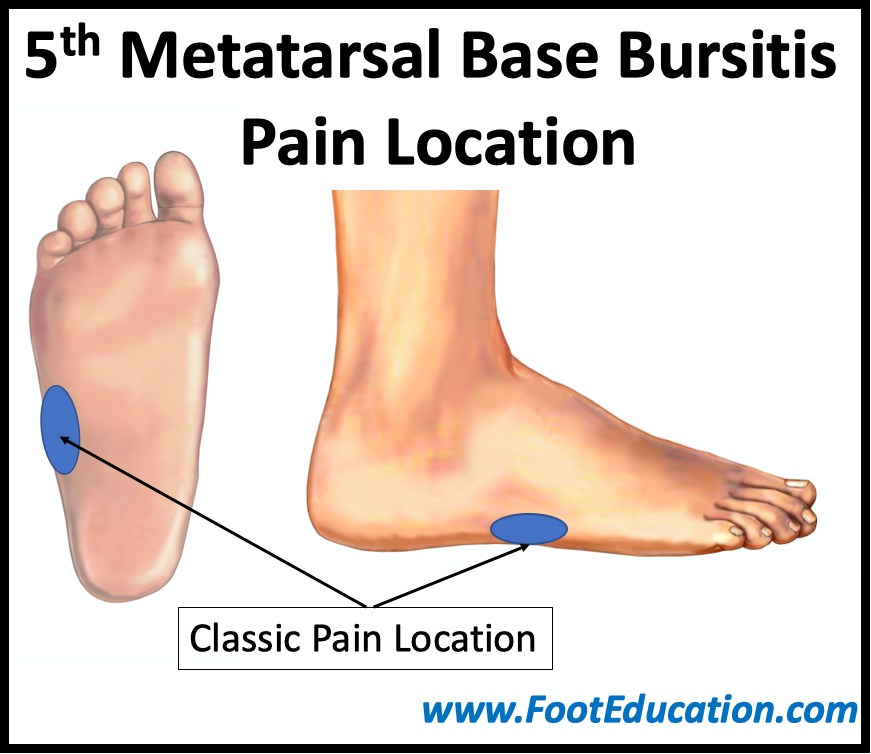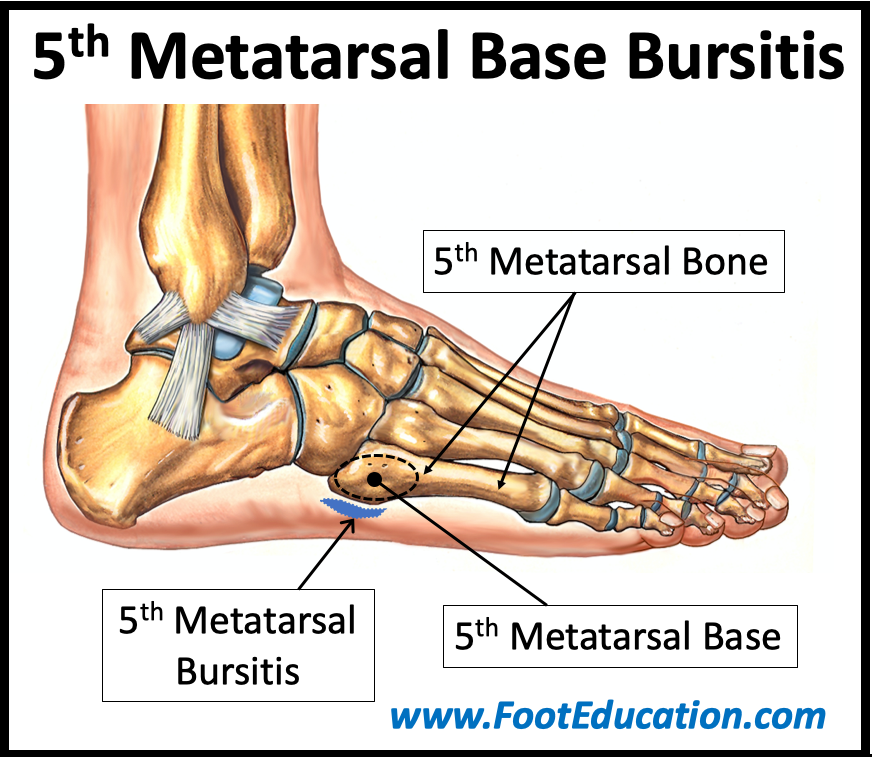Fifth Metatarsal Base Bursitis
Chronic pain on the outside part of the midfoot may be due to fifth metatarsal bursitis. The area of discomfort is associated with the prominent bone at the base of the fifth metatarsal and may be associated with some swelling due to inflammation of an associated fluid filled bursa (bursitis). Symptoms can be experienced on the outside part of the midfoot, but more commonly they are experienced on the outer part of the sole of the foot (Figure 1). Patients will often report a recent change in activity level or shoe wear. The cause of a fifth metatarsal bursitis is a prominence of the bone at the base of the fifth metatarsal (Figure 2) which leads to disproportionate loading and subsequently irritation to the tissue in this area. This is what causes the bursitis to form.


Physical Examination
Patients suffering from a painful fifth metatarsal bursitis will often have a prominence associated with the base of the fifth metatarsal bone. There is usually overlying soft-tissue which is swollen and may create discomfort with direct pressure. The soft tissue may be boggy due to the fluid filled bursa. This bursa can vary considerably in size. It is not uncommon for patients with this condition to have a high arched foot. A high arched foot shape often leads to disproportionate loading over the outside part of the midfoot. Similarly, patients may be noted to have more inward motion of their foot (inversion) compared to outward motion (eversion). Any foot shape or activity that leads to localized disproportionate loading over the outside part of the midfoot will increase the likelihood of a painful fifth metatarsal bursitis developing.
Imaging
Weight-bearing x-rays are usually normal. However, it is important to rule out a stress-related Jones fracture of the base of the fifth metatarsal, which is a more serious condition. X-rays may reveal evidence of a higher arched foot.
An MRI of the area is usually not indicated. However, if performed, it will likely show edema in the soft tissue. An inflamed fluid filled bursa associated with the base of the fifth metatarsal may also be identified.
Treatment of a Fifth Metatarsal Bursitis
This condition can usually be treated conservatively. Stopping any activities which has incited the condition to develop will be an important component of the treatment. Appropriate shoe wear and inserts are also helpful. Comfort shoes with a stiff sole but a very soft insert will often help alleviate symptoms. This combination of a comfort shoe and a soft insert creates space for the bony prominence and thereby disperses the force associated with weight-bearing more widely throughout the foot. This type of comfort shoe set up is a key component of conservative treatment.
Surgical Treatment
It is uncommon for surgery to be required to address a fifth metatarsal bursitis. However, if the bony prominence is quite marked, and the condition is persistent and debilitating, surgery may need to be considered. If the foot position is stable surgery to shave off some of the bony prominence may be beneficial. More commonly the high arched foot deformity has been exacerbated by muscle imbalance from a neurological condition or injury. If this is the case, the underlying reason for the associated foot deformity will need to be addressed surgically.
August 28, 2024